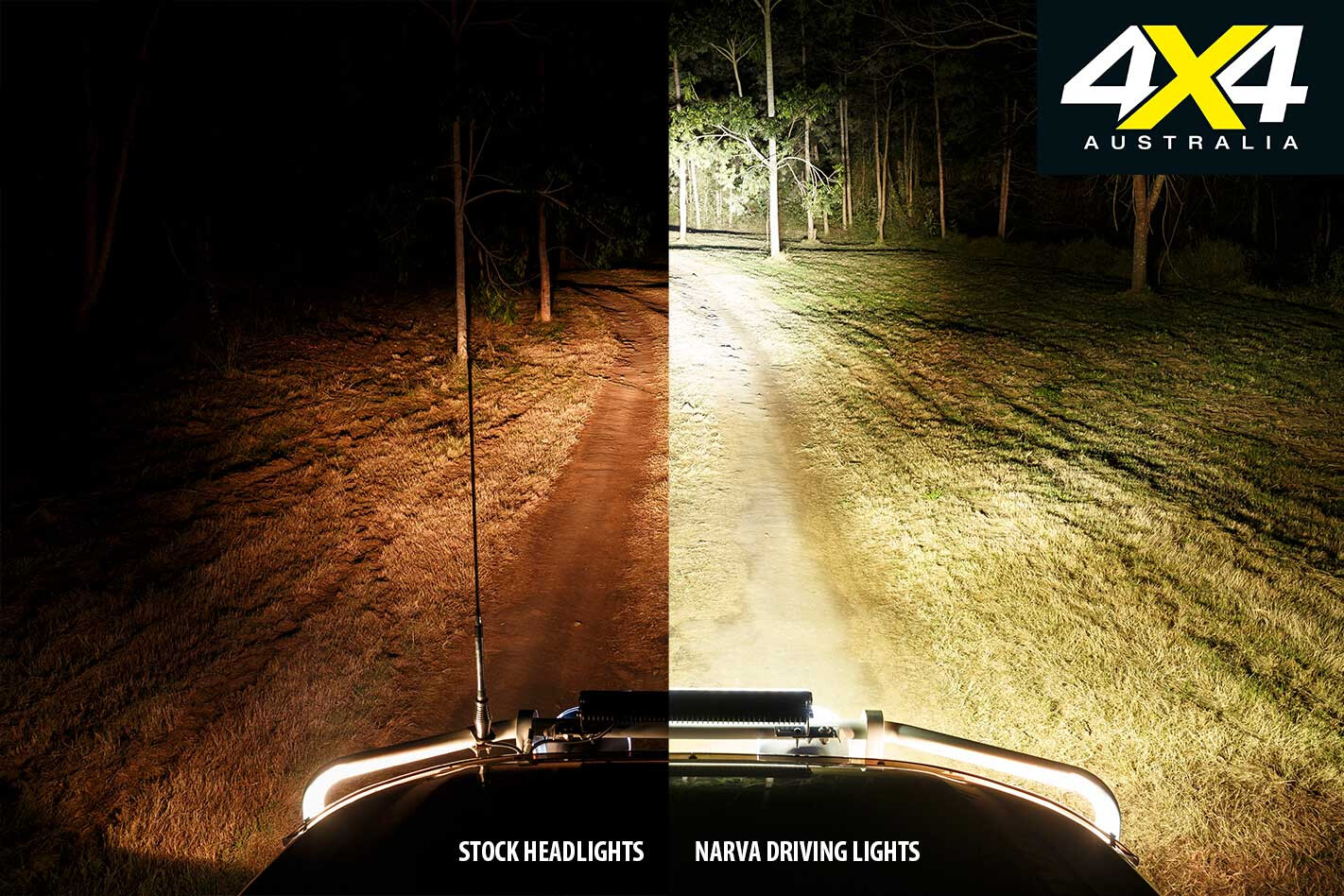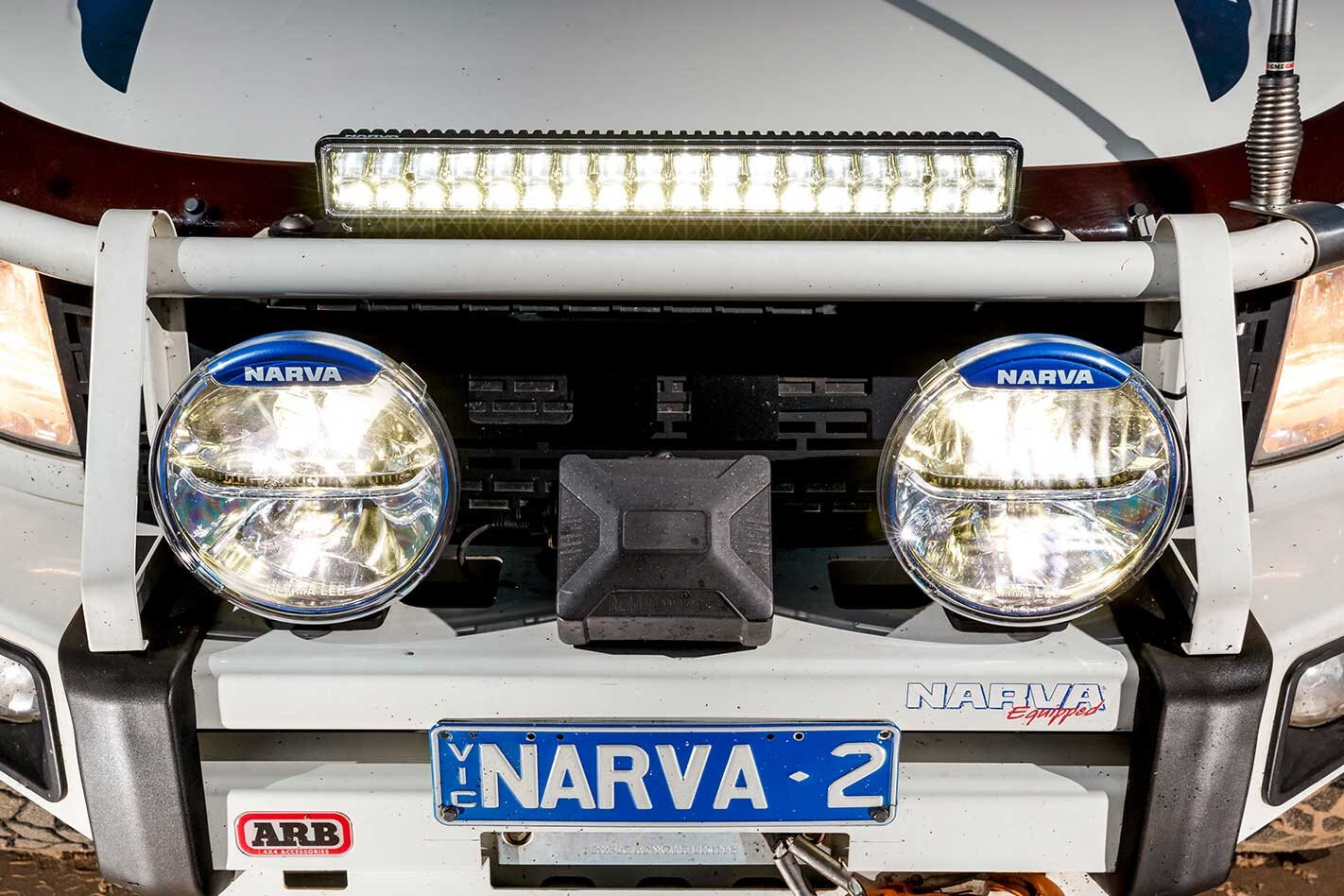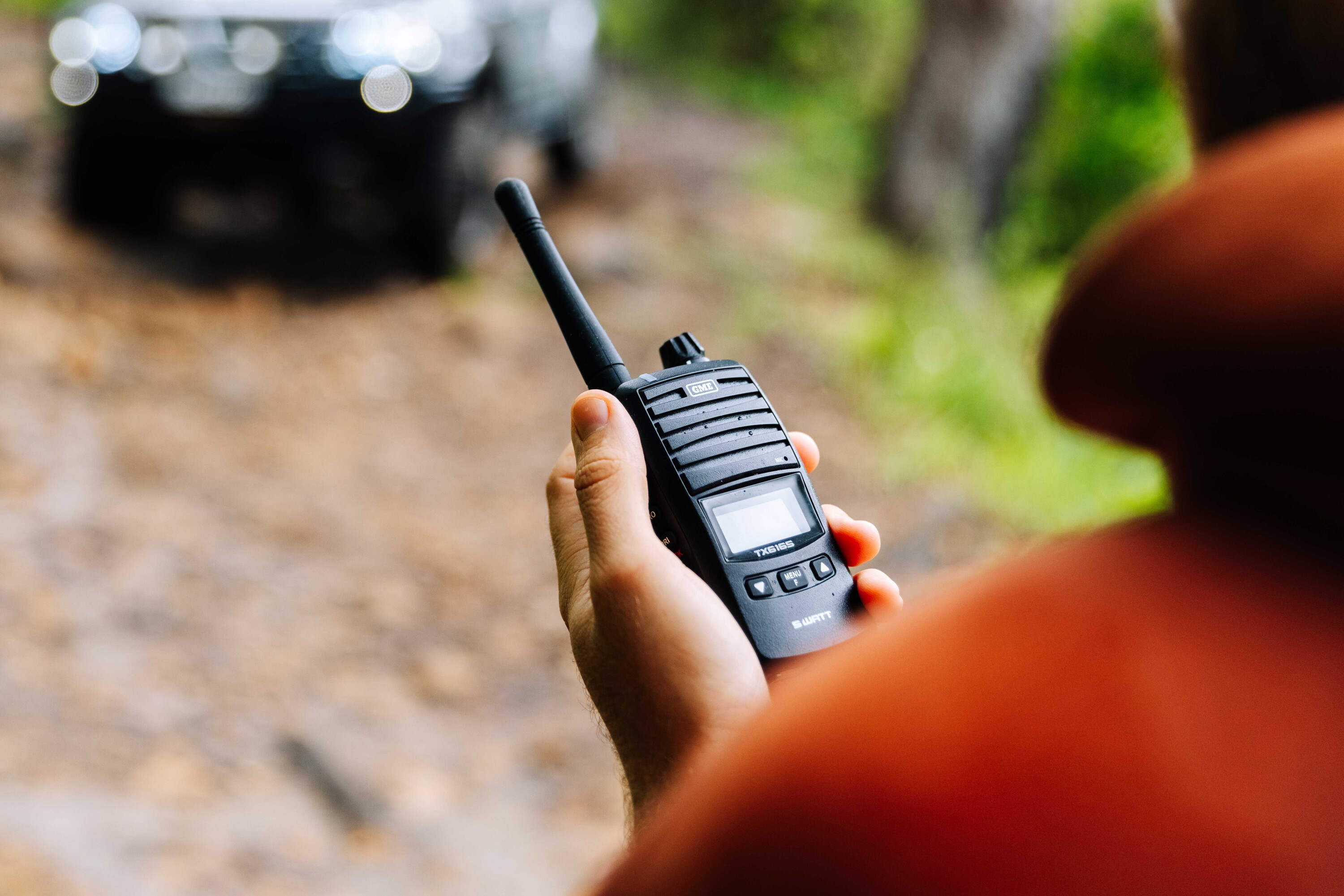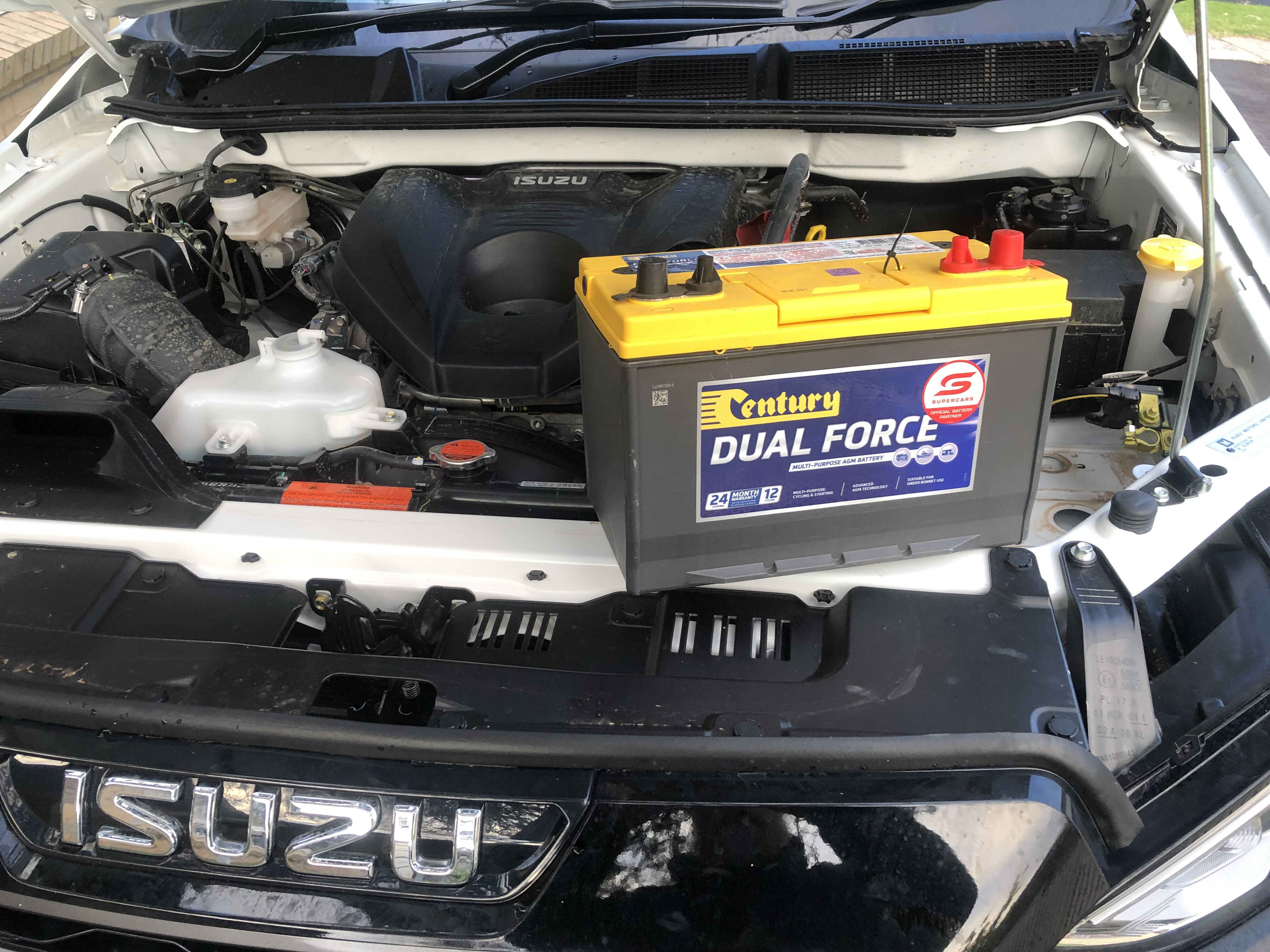I’VE spent the last few weeks driving behind Narva’s Ultima LED 225 driving lights and Explora double-row light bar.
The Ultima LEDs come in either 175 or 225mm diameter cases, with the smaller light featuring two 15W Cree LEDs and the latter getting three Cree 15W LEDs. Cree is an American-based high-performance LED and lighting products manufacturer, which now has major production facilities in China.
The colour temperature of the LEDs is 5000°K, which is close to normal daylight, and the lights have a Colour Rendering Index (CRI) of 70. The housing is an extra tough, glass-reinforced polymer with a hard-coated polycarbonate lens and lens protector, while a fully integrated DT connector ensures a secure power connection.
The combination kits come with a plug-n-play wiring harness, and the single-light kits come with a prewired DT connector. The lights are fully sealed against water and dust ingress, to IP67 standard, which means they can stand being immersed in water (up to a metre in depth) for 30 minutes.
The multi-position mounting bracket, with stainless steel mounting hardware, is sturdy. Initially, we didn’t have the mount tightened enough and, while it stayed aimed correctly when on bitumen, it needed to be retightened on the corrugated and potholed dirt to Tibooburra.
The reflector – utilising Narva’s ‘Optic Drive’ technology – is designed to capture and focus more of the light generated by the LEDs and pushing that light down the road, to where you want it; and an inbuilt LED light pipe, running horizontally across the centre of the light, has been approved as a front-position light for daytime driving.

An internal heatsink (to suck heat away from the LEDs) is backed by reflector vents, to help eliminate condensation and lens fog; while an ‘Active Thermal Management System’ enables the lamp to run harder for longer.
Our vehicle was set-up with Ultima 225 broad-beam and pencil-beam pattern lights, which together throw a beam of 730 metres (at 1 Lux) down the road. You’ll get up to 800 metres with two pencil-beam lights. The smaller 175 lights fall a little short of these figures.
These lights were easy on the eye and extended far enough down the road to illuminate kangaroos and other wildlife before I got to them. The beam also throws a fair amount of light to the side of the road, but it’s not unnecessarily bright on the peripheral.

We also fitted a 22-inch double-row LED light bar which comes with 36 five-Watt Osram LEDs, making a total of 180 Watts with a colour temp of 5700°K. The housing is die-cast aluminium, the polycarbonate lens is virtually unbreakable, and the complete unit is fully sealed and waterproof to IP69K standard. It has stainless steel brackets, mounting hardware and a wiring harness.
This light bar sends light down the road for 460 metres (at 1 Lux); the smaller bars will do a slightly lesser job. The light was flexible and had a good, wide pattern that extended a reasonable distance.
To optimise performance, I’d go for two pencil beams (for distance) and the double-row 22-inch light bar (for maximum light up close and out wide). You’ll pay a little more for the two single-light kits, but it’ll be worth it. Still, the combo kits offer impressive lighting and are very well priced.
RATED Available from: www.narva.com.au
ULTIMA DRIVING LIGHTS 225 RRP: $899 WE SAY: Good looking, high performing, great value lights.
EXPLORA LIGHT BARS RRP: 14-inch single-row $149; 22-inch single-row $299; 22-inch double-row $399 WE SAY: Very flexible light with a good wide pattern.
CRI
The Colour Rendering Index can best be explained by how different colours appear and how close they are to what they look like under natural light, which is rated at 100. Most normal, white LEDs on the market fall around the 70 mark on the CRI.
RATED Available from: www.powertec.com.au www.arb.com.au/stores/arb-broken-hill/ RRP: Around $1000 WE SAY: Great to improve your phone usage in the bush.





